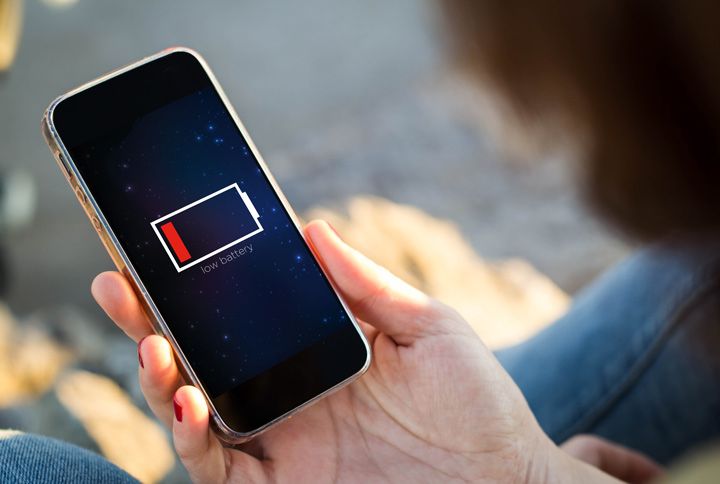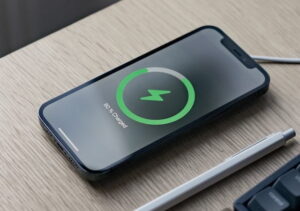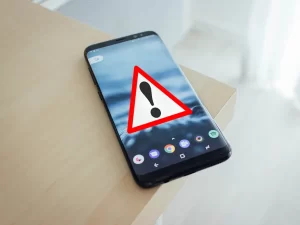Many smartphone users worry about overcharging, believing that leaving their phone plugged in overnight or for extended periods can damage the battery. Even though modern smartphones have built-in overcharging protection, leaving your phone plugged in for longer than necessary can still be detrimental to your battery in the long run. Leaving your battery fully charged for extended periods can stress it out and shorten its lifespan. To prevent damage to your phone, unplug it from the wall after it is fully charged, and avoid leaving your phone charging overnight if possible.
1. Using Unapproved or Low-Quality Chargers
Using an unapproved or low-quality charger can seriously damage your phone’s battery. Chargers that are not approved by the phone manufacturer may not manage the current properly, which can cause changes in charging speed and damage the battery. A bad charger can also cause the battery to overheat or charge slowly, which can put extra strain on the battery and shorten its lifespan. Make sure to use the charger that came with your phone or a high-quality charger approved by the manufacturer to ensure safe and effective charging.
2. Charging Your Phone in Extreme Temperatures
Charging your phone in extremely hot or cold temperatures can damage the battery. Temperatures that are too high or too low can slow the charging process or even damage the battery. Charging the battery in a very hot place can cause the battery to overheat. Charging the battery in a very cold place can cause the battery to charge slowly and not work properly. To keep your phone’s battery safe, charge it in a room with a stable temperature and away from places that are too hot or too cold.
3. Charging Your Phone with a Faulty Cable
A bad charging cable can be the main cause of battery problems. Damaged or worn cable insulation can reduce charging reliability, increase charging time, or even cause your device to overheat. Additionally, using a cable that doesn’t fit your phone or is frayed can slow down charging and even damage your battery. Regularly check your charging cable for signs of wear and replace it with a new, high-quality charging cable when necessary to ensure safe and effective charging.
4. Let your Phone’s Battery Run Down
It’s common to let your phone’s battery run down completely and then charge it again, but this can damage your battery in the long run. Today’s lithium-ion batteries don’t need to be fully discharged before recharging. They work best when the charge is between 20% and 80%. Draining your battery down to 0% repeatedly puts extra strain on your battery and shortens its lifespan. Instead, try charging your phone when the battery level is between 20% and 30% to keep your battery healthy.
5. Using Your Phone While Charging
Using your phone while charging can cause the phone to heat up and shorten the battery life. Playing games, streaming videos, or using resource-intensive apps while your phone is charging can cause your phone to overheat, which can affect the performance and lifespan of the battery. It is best to avoid performing heavy tasks while your phone is plugged in to prevent the phone from generating too much heat and charging too quickly. Not using your phone while it is charging can help keep the battery healthy and ensure that it is fully charged.
6. Charging Your Phone with a Loose Connection
If the connection between the charging port and the cable is loose or incorrect, the battery may not charge quickly or at all. If the connection is not secure, your phone may only charge occasionally. This can cause the battery charge to fluctuate up and down, which can be harmful to your health. To prevent this from happening, make sure that your charging cable is properly connected to your phone and power source. If you notice any issues with your charging connection, you may need to check the cable or charging port or replace it with a new one.
Conclusion
To keep your phone’s battery healthy and extend its lifespan, you need to understand and fix common charging mistakes. You can help keep your device in good shape by not overcharging it, using unapproved chargers, and letting the battery run down completely. Paying close attention to factors like temperature, cable quality, and software updates can also help your battery perform better and charge more efficiently. If you charge it carefully and store it properly, your smartphone battery will last for years.
FAQs
1. Is it Harmful to Leave Your Phone Plugged In Overnight?
Most modern smartphones have built-in overcharge protection, so it’s usually not a bad idea to leave your phone plugged in overnight. However, leaving it plugged in for extended periods can drain the battery over time. It’s best to unplug your phone once the battery is full or use a smart plug with a timer to do so.
2. How Dangerous Is It to Use an Unapproved Charger?
Using an unapproved or low-quality charger can cause your phone to overheat, charge at different speeds, or even damage the battery. To ensure safe and fast charging, always use the charger that comes with your device or purchase a high-quality charger approved by the manufacturer.
3. Will charging your phone in very hot or cold weather damage the battery?
Yes, charging your phone in extremely hot or cold weather can damage the battery. High temperatures can overheat the battery, while extremely low temperatures can cause the charging time to be longer and affect battery performance. To avoid these issues, it is best to charge your phone in a temperature-controlled area.
4. How do I know if my charging cable is damaged?
Slow charging, intermittent connection, or visible damage (such as worn insulation) are all signs of a damaged charging cable. Inspect the cable for wear and tear, and if these issues occur, consider purchasing a new, high-quality cable.
5. Is it bad to let your phone charge to 0% before recharging?
It can be bad in the long run to let your phone’s battery run out. Today’s lithium-ion batteries work best when they’re between 20 and 80 percent charged. Consuming all of a battery’s power puts extra strain on the battery and can shorten its lifespan. It’s best to recharge when the battery is between 20% and 30% charged.




